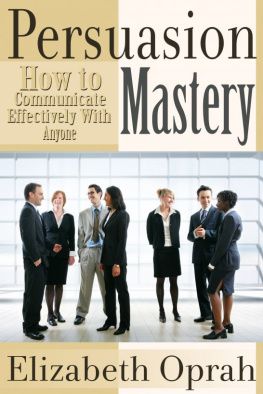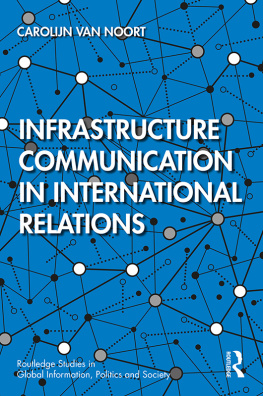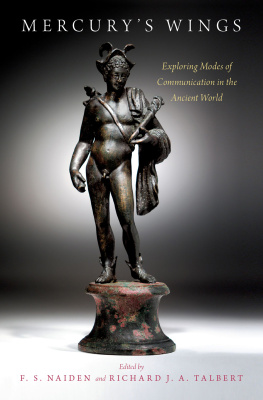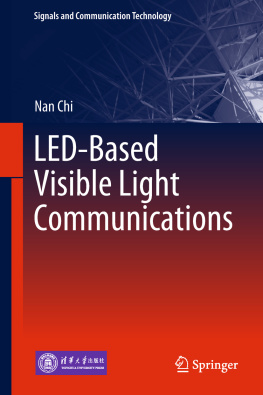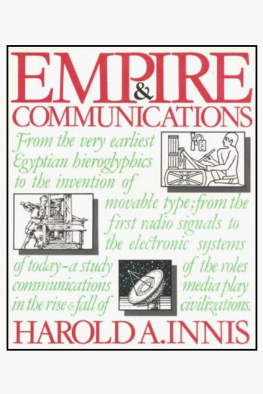
Registers and Modes of
Communication in the Ancient
Near East
It is the quintessential nature of humans to communicate with each other. Good communications, bad communications, miscommunications, or no communications at all have driven everything from world events to the most mundane of interactions. At the broadest level, communication entails many registers and modes: verbal, iconographic, symbolic, oral, written, and performed. Relationships and identities real and fictive arise from communication, but how and why were they effected and how should they be understood? The chapters in this volume address some of the registers and modes of communication in the ancient Near East. Particular focuses are imperial and court communications between rulers and ruled, communications intended for a given community, and those between families and individuals. Topics cover a broad chronological period (3rd millennium BC to 1st millennium AD), and geographic range (Egypt to Israel and Mesopotamia) encapsulating the extraordinarily diverse plurality of human experience. This volume is deliberately interdisciplinary and cross-cultural, and its broad scope provides wide insights and a holistic understanding of communication applicable today. It is intended for both the scholar and readers with interests in ancient Near Eastern history and Biblical studies, communications (especially communications theory), and sociolinguistics.
Kyle H. Keimer is Lecturer in the Archaeology and History of Ancient Israel and the Near East at Macquarie University, Australia.
Gillan Davis is Director, Program for Ancient Mediterranean Studies at Macquarie University, Australia.
Encompassing a wide spectrum of civilizations and periods, from the Early Bronze Age to the Roman imperial period, and ranging in its coverage from Mesopotamia to Anatolia, Syria, Palestine, and Egypt, this volume provides many penetrating insights into the ways Near Eastern people communicated with one another, on personal, state, and international levels. Through its multidisciplinary approach and use of modern research methods which enhance our understanding of both verbal and written interactions between the ancient Near Eastern peoples, it will be of great benefit to students and scholars engaged in any field of Near Eastern studies, from the Bronze Age through the biblical and Classical eras.
Professor Trevor Bryce, University of Queensland, Australia
Registers and Modes of
Communication in the Ancient
Near East
Getting the Message Across
Edited by Kyle H. Keimer
and Gillan Davis
First published 2018
by Routledge
2 Park Square, Milton Park, Abingdon, Oxon OX14 4RN
and by Routledge
711 Third Avenue, New York, NY 10017
Routledge is an imprint of the Taylor & Francis Group, an informa business
2018 selection and editorial matter, Kyle H. Keimer and Gillan Davis; individual chapters, the contributors
The right of Kyle H. Keimer and Gillan Davis to be identified as the authors of the editorial material, and of the authors for their individual chapters, has been asserted in accordance with sections 77 and 78 of the Copyright, Designs and Patents Act 1988.
All rights reserved. No part of this book may be reprinted or reproduced or utilised in any form or by any electronic, mechanical, or other means, now known or hereafter invented, including photocopying and recording, or in any information storage or retrieval system, without permission in writing from the publishers.
Trademark notice: Product or corporate names may be trademarks or registered trademarks, and are used only for identification and explanation without intent to infringe.
British Library Cataloguing-in-Publication Data
A catalogue record for this book is available from the British Library
Library of Congress Cataloging-in-Publication Data
Names: Keimer, Kyle H.. editor. | Davis, Gillan, editor.
Title: Registers and modes of communication in the ancient Near East : getting the message across / edited by Kyle H. Keimer and Gillan Davis.
Description: Abingdon, Oxon ; New York : Routledge, 2017.
Identifiers: LCCN 2017016773| ISBN 9781138635302 (hardback : alk. paper) | ISBN 9781315206448 (ebook)
Subjects: LCSH: CommunicationMiddle EastHistoryTo 1500. | Interpersonal relations and cultureMiddle EastHistoryTo 1500. | Semiotics.
Classification: LCC P92.M5 R44 2017 | DDC 302.230935dc23
LC record available at https://lccn.loc.gov/2017016773
ISBN: 978-1-138-63530-2 (hbk)
ISBN: 978-1-315-20644-8 (ebk)
Typeset in Times New Roman
by Cenveo Publisher Services
To Elizabeth and Sharon
Contents
GENERAL INTRODUCTION
Communicating in the past; connecting with the past
GILLAN DAVIS AND KYLE H. KEIMER
PART I. IMPERIAL AND COURT COMMUNICATIONS
Introduction to Part I
NOEL WEEKS
SAMUEL JACKSON
LUIS R. SIDDALL
WAYNE HOROWITZ
SAMUEL N. C. LIEU
PART II. COMMUNITY COMMUNICATION
Introduction to Part II
GARETH WEARNE
RACHELLE GILMOUR
IAN YOUNG
RACHEL MANSFIELD, BENJAMIN OVERCASH, AND STEPHEN LLEWELYN
PART III. COMMUNICATIONS BETWEEN FAMILIES AND INDIVIDUALS
Introduction to Part III
PETER ZILBERG
LOUISE M. PRYKE
ALANNA NOBBS
Gillan Davis (PhD, Macquarie University) is the Director, Program for Ancient Mediterranean Studies at Macquarie University, Australia, where he lectures in Greek history and runs the Ancient Israel Program. His primary research interests are numismatics, ancient metals including compositional analysis and trade, and Greek history. He is Managing Editor of the Journal of the Numismatic Association of Australia, and partner investigator in the ERC-funded group: Silver Isotopes and the Rise of Money.
Rachelle Gilmour (PhD, University of Sydney) is a lecturer in Biblical Studies at the Broken Bay Institute, Australia, and conjoint lecturer at the University of Newcastle, Australia. Her research interests are in narrative and historiography in the Hebrew Bible and she has published two monographs, Representing the Past: A Literary Approach to Narrative Historiography in the Book of Samuel (2011), and Juxtaposition and the Elisha Cycle (2014).
Wayne Horowitz is Professor of Assyriology at the Hebrew University of Jerusalem, Israel. Born in the United States, he studied for his PhD at the University of Birmingham, UK, before moving to Israel 30 years ago. His research interests are ancient Mesopotamian science, myth, and narrative, with specific focus on cuneiform astronomical texts. Current ongoing research projects include Cuneiform in Canaan and The CANZ project (Cuneiform in Australia and New Zealand).
Samuel Jackson, Head of History and Biblical Studies at Arndell Anglican College, New South Wales, Australia, completed his PhD in the Classics and Ancient History Department of the University of Sydney. He is the author of A Comparison of Ancient Near Eastern Law Collections Prior to the First Millennium BC (2008). His research interests centre around historiography and representation in the ancient Near East.


